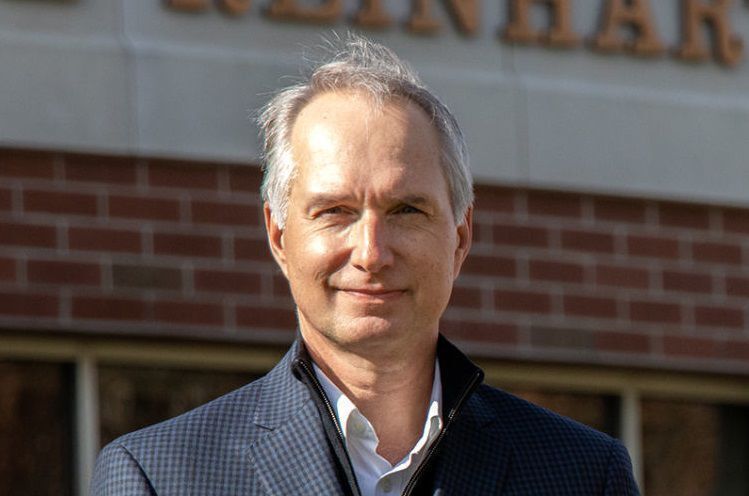Richard Kyte: Why community involvement is key to combating social isolation
The National Opinion Research Center at the University of Chicago released results of a survey last month. They asked people about their attitudes toward a number of things, including family, religion, money, patriotism and hard work.
One response in particular stood out: Only 27% of the respondents said “community involvement” was very important to them, down from 62% in 2019.
One should be careful not to attach too much weight to any single survey result, but, in this case, the report is consistent with many other troubling findings about changes in American society.
Surveys on volunteerism indicate that about a quarter of Americans volunteer formally each year, and about half informally help out neighbors. The highest rates of formal volunteering are in Utah and Wyoming, while informal volunteering is highest in Nebraska and Montana, where nearly 70% of the population regularly help out their neighbors.
Yet the supply of volunteers is aging, and organizations that rely on volunteers to provide vital services in communities are struggling to keep up with the increased demand. A recent study of 1,200 nonprofits reported that in 2022 twice as many had trouble finding enough volunteers compared to 2019.
Moreover, most of the widely known service clubs — such as Rotary, Kiwanis, Lions, Civitan and Optimist — have been in gradual decline since their peak in the 1950s and 1960s. Organizations including Boy Scouts and Girl Scouts, which prepare youth for community participation later in life, have also been declining since their peak in the 1970s, dropping from over 6 million members to slightly more than 1 million today.
If volunteering was just a matter of finding enough people to help out in communities, that would be one thing. But an even greater consequence of the decline in volunteers is the overall effect on participants’ physical and emotional health.
Our nation is experiencing what many experts term an “epidemic” of loneliness, isolation and depression. One in five millennials report having no friends and no acquaintances. We have organizations in every community dying for lack of members, and homes are full of people sitting alone every evening wondering how their lives became so small.
A wide circle of acquaintances provides a wealth of possibilities for nurturing friendships. And we know from research that those who have several friends are much less likely to feel lonely or to suffer from poor health. In fact, 86% of Americans who have six or more friends say they are satisfied or very satisfied with their personal health.
Friendship does not just happen accidentally. It takes time for relationships to mature, and the best way to nurture relationships is by participating in shared activities.
I was attending a meeting of my local Rotary club recently, my attention wandering while somebody up front was making announcements about an upcoming event. They needed volunteers and would be passing a signup sheet around to the tables. I looked at all the people in the room. How many of these club members had I volunteered with over the years?
There was Ray sitting at a table up front. One weekend when I was still new to the club we found ourselves painting a building owned by a local nonprofit organization. He told me all about his children.
Mark was talking to Julie at the table next to mine. Each winter just before Christmas I visit with them as we pick up fruit baskets to deliver around town. Jerry was at a table near the back. I recall the bitterly cold January day when we were helping put away the holiday light display at Riverside Park. We didn’t talk much; we were too miserable. But I am still grateful to him for giving me a package of hand warmers I had not thought to bring along.
Looking around the room some more, I saw Trent and Amy and Jennifer. They were talking together at a table off to the side. We have all served on various committees together, and I realized I know something about each of them due to conversations while working on projects together. Trent loves to fish. Amy had knee surgery a couple of years ago. Jennifer loves cats, but I don’t hold that against her. She has admirable qualities as well.
I kept looking about the room, trying to get a handle on the number of people with whom I had worked on some project or other, but I soon gave up. At every table there were several people I had worked alongside over the years, and the sight of each brought up distinct and pleasant memories.
We tend to think of service to others as a sacrifice. And it certainly can be. Depending on the circumstances, serving may require time, money, or attention; often it takes all three. Yet, serving also satisfies a deep-seated human need for belonging — for being loved, respected and useful.
Twenty years ago, someone was thoughtful enough to invite me to come to a Rotary meeting and consider joining. I thought I was signing up to help others, but what I have been given is so much greater than anything I may have contributed.
I believe the solution to many of today’s most pressing social concerns is right in front of us. It consists in encouraging people simply to join with a small group of friends who are interested in making their community better. It does not require a huge investment of tax dollars nor reform of our political system. It requires no protests, or debates or campaigns. All it requires, said Martin Luther King, Jr., is “… a heart full of grace. A soul generated by love.”
Imagine how many people might be saved from a life of loneliness and quiet desperation by a simple invitation and a willingness to say “yes.”

